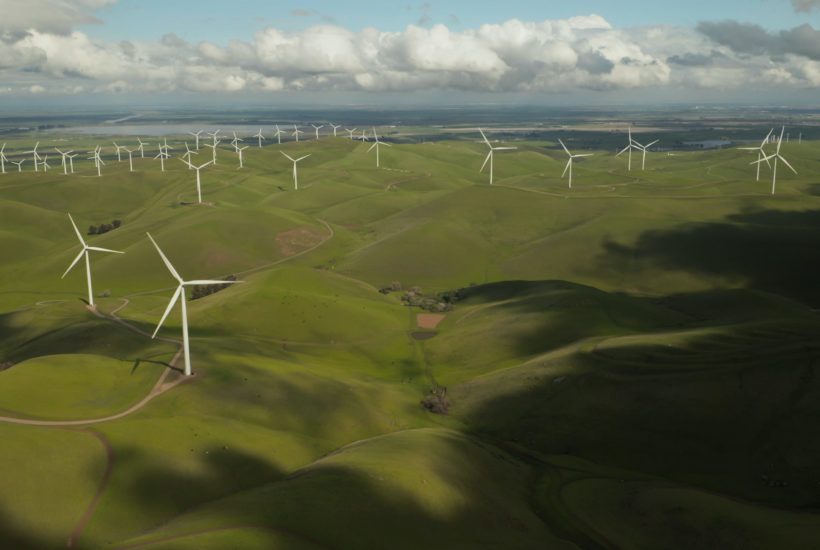Featured
The Renewables Sector in Spain Fears 2 billion Impact of Ribera’s Plan
For renewables, the main point of conflict does not lie in allocating part of their energy to the regulated PVPC tariff, which includes domestic consumers, but they regret that large industrial consumers are included in the same bag. Renewable companies claim that they have offered long-term contracts to industrial consumers in the past, but that these consumers rejected them when the price was low.

The Spanish Government will approve next Tuesday, November 9th, a new Royal Decree-Law that will serve to link the energy consumed by the PVPC and industry to the costs of renewables.
The measure communicated by the vice-president and Minister of Ecological Transition, Teresa Ribera, to the renewables and cogeneration sector, has provoked the discomfort of clean energies.
According to sources, the Executive’s decision will mean subtracting around $2.3 billion (€2 billion) from the liquidity of a sector that they assure will once again be the one affected by the legal changes, while the electricity companies have managed to avoid the $3 billion (€2.6 billion) blow to their accounts.
For the renewables sector, the measure will mean having to increase their financing costs, since the additional inflow of money that this price increase had caused them, made it easier for the companies to accelerate investments and reduce their financial costs. The sector said that the measure has been little studied and added that they expected more time to be able to debate the proposals put forward in this respect.
For renewables, the main point of conflict does not lie in allocating part of their energy to the regulated PVPC tariff, which includes domestic consumers, but they regret that large industrial consumers are included in the same bag.
Renewable companies claim that they have offered long-term contracts to industrial consumers in the past, but that these consumers rejected them when the price was low. They also recall that at the time when wholesale market levels were at 20 euros/MWh nobody proposed a plan to provide liquidity to the sector and that now liquidity is going to be taken from the renewables sector to pump it into large industrial consumers.
Read more about the renewables sector in Spain and find the most important business headlines of the day with the Born2Invets mobile app.
Record profits registered by the companies in the sector
In the same vein, they claim that companies in these sectors are recording record profits, as they are being able to pass on the increase in energy costs to the prices of the raw materials they produce.
According to Bloomberg data, Arcelor has achieved an Ebitda in the first half of the year of $9.6 billion (€8.3 billion), five times higher than in the same period of the previous year, and aims to end the year with $22 billion (€19.04 billion).
Acerinox’s Ebitda is expected to reach $988 million (€856 million) in 2021 and be the highest in the last 12 years and almost double that achieved in 2017. For Holcim, the estimate for this year is $7.22 billion (€6.25 billion), 16% more than in 2020 and would be close to the peak of $7.85 billion (€6.8 billion) reached in 2017. And at Cemex, Ebitda is expected to reach $3 billion (€2.6 billion) and would be the highest since 2007 and 52% higher than last year.
Viscofán, which assured that it had its energy needs covered, expects to reach an Ebitda of $285 million (€247 million), which would also be record levels since 2012. And Fluidra, which has suffered regulatory changes in the US and the cost of aluminum, is passing on the increase in selling prices and will record an Ebitda of $604 million (€523 million), compared to $346 million (€300 million) in 2020.
__
(Featured image by Tyler Casey via Unsplash)
DISCLAIMER: This article was written by a third party contributor and does not reflect the opinion of Born2Invest, its management, staff or its associates. Please review our disclaimer for more information.
This article may include forward-looking statements. These forward-looking statements generally are identified by the words “believe,” “project,” “estimate,” “become,” “plan,” “will,” and similar expressions. These forward-looking statements involve known and unknown risks as well as uncertainties, including those discussed in the following cautionary statements and elsewhere in this article and on this site. Although the Company may believe that its expectations are based on reasonable assumptions, the actual results that the Company may achieve may differ materially from any forward-looking statements, which reflect the opinions of the management of the Company only as of the date hereof. Additionally, please make sure to read these important disclosures.
First published in elEconomista.es, a third-party contributor translated and adapted the article from the original. In case of discrepancy, the original will prevail.
Although we made reasonable efforts to provide accurate translations, some parts may be incorrect. Born2Invest assumes no responsibility for errors, omissions or ambiguities in the translations provided on this website. Any person or entity relying on translated content does so at their own risk. Born2Invest is not responsible for losses caused by such reliance on the accuracy or reliability of translated information. If you wish to report an error or inaccuracy in the translation, we encourage you to contact us.

-

 Business2 weeks ago
Business2 weeks agoLegal Process for Dividing Real Estate Inheritance
-

 Fintech13 hours ago
Fintech13 hours agoJPMorgan’s Data Fees Shake Fintech: PayPal Takes a Hit
-

 Fintech1 week ago
Fintech1 week agoPUMP ICO Raises Eyebrows: Cash Grab or Meme Coin Meltdown?
-

 Africa3 days ago
Africa3 days agoSurging Expenditures Widen Morocco’s Budget Deficit Despite Revenue Growth














